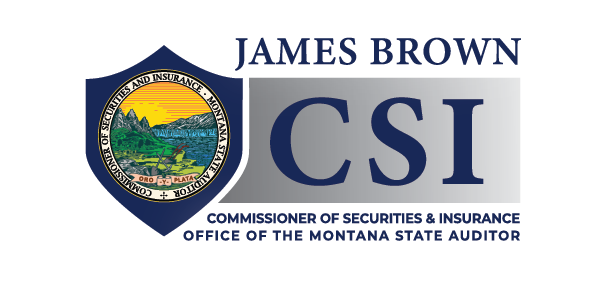Gov. Greg Gianforte signed several bills into law this week, including policies to end same-day voting registration and change voter ID requirements; limit local public health powers; expand telehealth access; give businesses tax breaks for vocational training; allow insurance companies to consider gender when setting rates; address the issue of missing and murdered Indigenous people; and update state laws after federal recognition of the Little Shell Tribe of Chippewa Indians.
New Laws End Same-Day Voting Registration, Alter Voting ID Requirements
Changes to how and when Montanans can register and vote were finalized Monday.
According to a researcher at the National Conference of State Legislatures, Montana became the first state to end same-day voter registration after putting the policy in place. The deadline is now noon the day before the election.
Proponents say the new law will ease the Election Day burden on county staff while reducing wait times for voters. Opponents say it will make it more difficult to vote, particularly among Indigenous communities.
Wendy Underhill, an elections expert with the National Conference of State Legislatures, says no other state has decided to take same-day registration off the books.
“In general, the trend has been in the direction of states adopting Election Day registration,” Underhill told Yellowstone Public Radio.
Gov. Gianforte also signed a bill altering voter ID requirements. Republican lawmakers say it and other election-related legislation passed this session are needed to bolster election security in the state.
New Laws Limit Local Health Board Powers, Expand Telehealth Access
Republican Gov. Greg Gianforte has signed two bills into law in response to public health officials’ authority and access to telehealth during the COVID-19 pandemic.
One of the news laws will allow locally elected officials to have oversight, and overrule, the powers of boards of health and public health officers. Health officials’ authority was highlighted during the state of emergency created by COVID-19 when restrictions on businesses were put in place in attempts to slow the virus’ spread.
Republicans passed the proposal mostly along party lines with Democratic opposition.
In a less controversial move, another new law will make permanent the removal of certain regulations that were paused during the pandemic to expand access to telehealth care.
Both chambers of the legislature passed that change unanimously.
MMIP, Little Shell Recognition Bills Signed Into Law
Three bills brought by members of Montana’s American Indian Caucus to address the state’s Missing and Murdered Indigenous Persons crisis and update Montana law to include the federal recognition of the Little Shell Tribe are also now law.
Gov. Gianforte signed House Bill 35 on Monday, a bill brought by Democratic Rep. Sharon Stewart Peregoy from Crow Agency to establish a missing persons review commission at the Montana Department of Justice.
The commission is tasked with reviewing missing Indigenous person cold cases and analyzing potential areas of law enforcement improvement.
Montana’s Attorney General, Austin Knudsen, will appoint members to the commission from tribal governments, the state government, nonprofits and law enforcement from various jurisdictions across the state.
Gianforte also signed House Bill 98, which extends and makes funding available for Montana’s Missing Indigenous Persons Task Force. During the last year, the task force collaborated with Blackfeet Community College to launch a missing persons reporting website, which families can use to submit reports directly and anonymously to local law enforcement.
Rep. Peregoy’s House Bill 36, which would have created a grant program for special law enforcement training, was tabled in committee last week.
The Governor also signed Democratic Rep. Frank Smith’s House Bill 34, which will update Montana’s laws and statutes to reflect the 2019 federal recognition of the Little Shell Tribe of Chippewa Indians.
Gov. Gianforte Signs Vocational Training Tax Credit
Governor Greg Gianforte talks to reporters after signing House Bill 252 inside the new site for Scheel’s Sporting Goods Store at the Missoula Southgate Mall, April 19, 2021.Credit Freddy Monares / Montana Public RadioEdit | Remove
Gov. Greg Gianforte Monday signed a bill to give businesses a tax break for sending employees to training for vocational, technical and trade professions. The bill is a key priority for Gianforte and Republican legislators this session.
The policy sponsored by Republican Rep. Llew Jones, of Conrad, creates a 50 percent tax credit for employee training expenses. The bill is estimated to dole out about $1 million in credits a year for the program and is expected to support as many as 1,000 scholarships annually until 2026.
Opponents to the bill cite the loss in revenue the policy could mean for the state.
Gianforte signed the bill in front of a construction crew inside the new site for Scheel’s sporting goods store at the Missoula Southgate Mall.
He says the state faces a labor shortage and that a four-year college degree isn’t for everyone.
“We ought to ensure that Montanan’s have access to the training and education they need to acquire and refine these skills,” Gianforte says.
Gianforte says the program will strengthen the state’s workforce.
The Legislature approved the policy in March.
Law Allows Insurers To Consider Gender When Setting Rates
A new Montana law allows insurance companies to consider gender when setting insurance rates.
The policy signed by Gov. Greg Gianforte was a priority for Republican State Auditor Troy Downing, who says it aims to help both insurance companies and consumers get fair rates. Opponents argue the state should continue to prohibit gender discrimination in rate making.
The bill passed the Legislature mostly along party lines, with Republicans in favor and Democrats against.
Montana has been unique since 1985 in prohibiting insurance companies from using gender to set insurance rates.
The new law will not apply to health insurance as the federal Affordable Care Act bars gender discrimination in rate making for health coverage.
Was this helpful?
Please give us your feedback!
Please let us know how we could improve this article.
